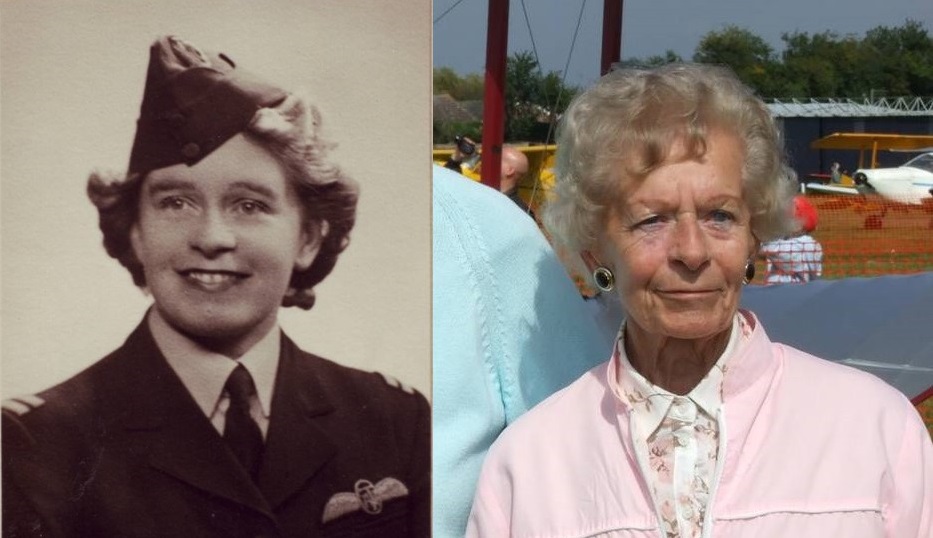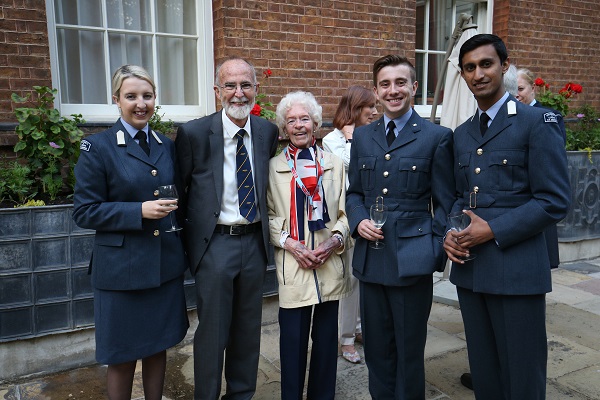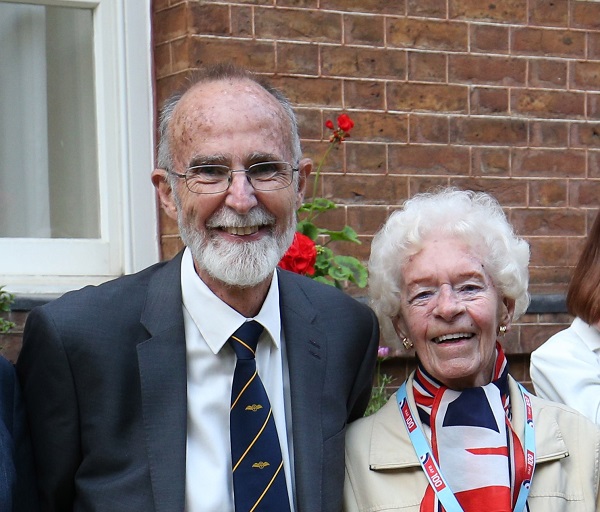
It is with great sadness that we learn of the death on 24 July 2018 of Mary Ellis, one of the few remaining ATA pilots. Mary was 101 years old: the photograph below was taken in the garden of 10 Downing Street on 23 May when Mary and our chairman Richard Poad were invited by the Prime Minister to attend an RAF 100 reception. Mary was in fine form and especially enjoyed talking to student pilots and air cadets. Holly, one of the students, told Mary “You are my inspiration” which pleased Mary no end.
Mary was a farmer’s daughter from Oxfordshire and joined ATA in October 1941. She was based at Hamble for almost all her ATA time, ferrying around 1,000 aircraft of 76 different types to 210 different airfields! She loved anything that was “fast and furious” and ferried 403 Spitfires, including 77 from Eastleigh outside Southampton. In 1943 she graduated to Class 4 twin-engined planes like the Mosquito, the Hudson and the Wellington; her conversion course would have been at the headquarters airfield at White Waltham, where ATA’s groundschool and Advanced Flying Training School were both located. Once she delivered a Wellington and the ground crew would not believe she was the pilot until they had searched the aircraft from nose to tail. In the summer of 1945 Mary became one of only two ATA women to ferry the RAF’s first jet, the Gloster Meteor. She said that she had no special training except a warning to “watch the fuel gauges, because it goes from full to empty in 40 minutes”. Mary’s favorite aircraft was the Spitfire but she loathed the amphibious Walrus which “wobbled across the sky with a mind of its own” and “must have been designed by R J Mitchell on a bad day”.
After ATA was disbanded on 30 November 1945 Mary kept ferrying planes as she (and several other women, including Rosamund Steenkamp) transferred to RAF 41 Group for several months. Pilots’ logbooks show the stamp on monthly summaries changing from ‘ATA No 1 Ferry Pool’ to ‘RAF No 1 Ferry Pool’. Subsequently Mary moved to the Isle of Wight, where she was Commandant of Sandown Airport. To mark her 100th birthday, the Isle of Wight Council granted her the Freedom of the island, which gave her the right to drive a flock of sheep down the main street of Newport, a right she never exercised but which one can quite imagine her doing! Behind the modest, gentle and kind exterior there was also a steely determination. Now she has ‘slipped the surly bonds of earth’ and will be greatly missed.
Mary’s book A Spitfire Girl is available through our on-line shop and is a really good read. It also has several fascinating extracts from her logbooks. Highly recommended.
Several reports of Mary’s death have stated that she was the last surviving female ATA pilot or even that she was the last ATA pilot. This is ‘fake news’! We know of two ATA veterans in the UK, one man and one woman, one ATA woman in western Canada and another in California, both of the latter about to be 100 years old. We also know of several ground engineers and ATC cadets, the latter being employed by ATA as messengers and pilot’s assistants. If you are reading this and know of any ATA veterans, whatever their jobs within the organisation, please get in touch with us.



